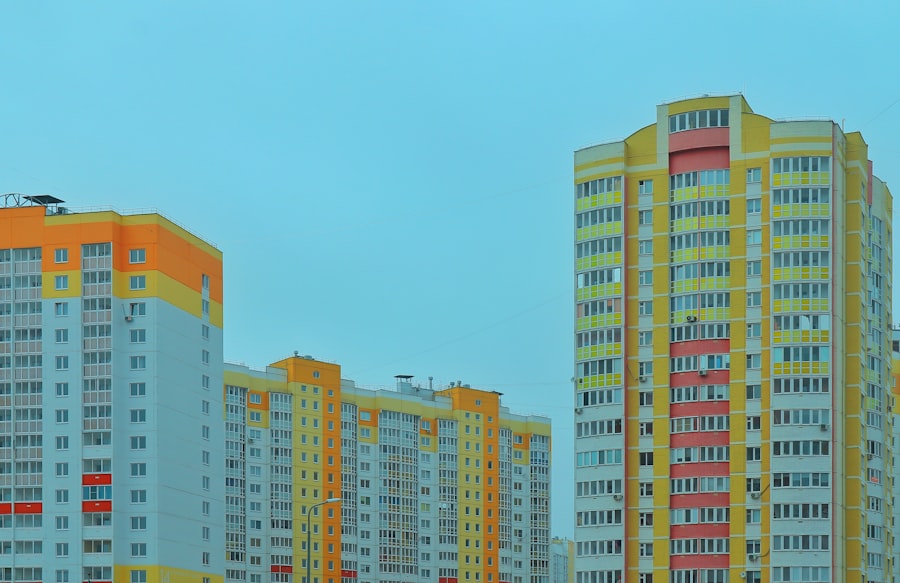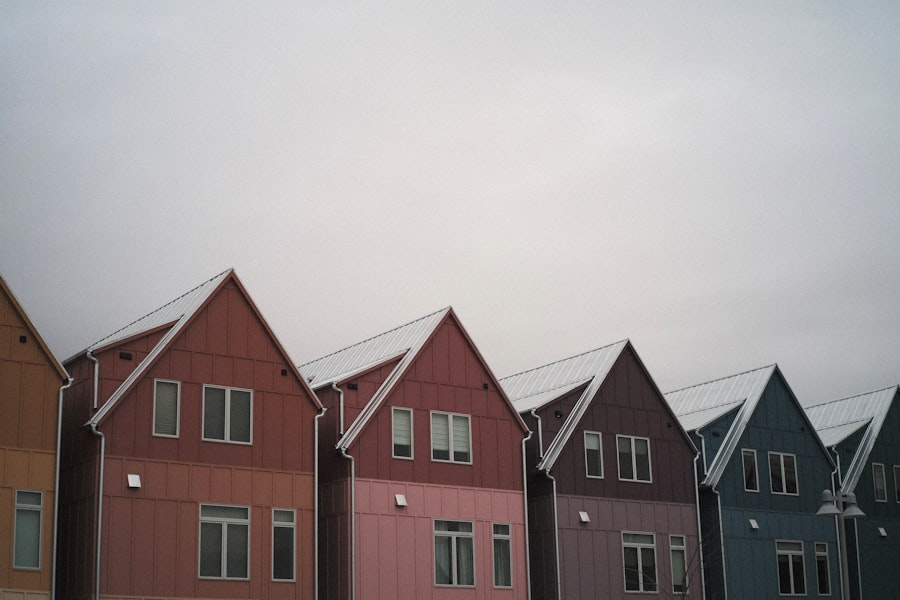Modular homes are a type of prefabricated housing that is constructed in sections, or modules, in a factory setting before being transported to the building site for assembly. Unlike traditional homes, which are built entirely on-site, modular homes are manufactured in a controlled environment, allowing for greater efficiency and quality control. The modules are designed to meet local building codes and regulations, ensuring that they are safe and durable.
Once the modules arrive at the site, they are assembled on a permanent foundation, creating a home that is indistinguishable from one built using conventional methods. The construction of modular homes involves a systematic approach that includes design, engineering, and manufacturing. Each module is built with the same materials and craftsmanship as site-built homes, often featuring high-quality finishes and energy-efficient systems.
The modular construction process can significantly reduce the time it takes to complete a home, as much of the work is done simultaneously in the factory while site preparation occurs. This method not only streamlines the building process but also minimizes waste and environmental impact, making modular homes an increasingly popular choice among environmentally conscious consumers.
Key Takeaways
- Modular homes are prefabricated homes that are built in sections in a factory and then transported to the building site for assembly.
- Advantages of modular homes include cost savings, faster construction time, and customizable design options.
- Finding modular homes near me can be done through online searches, contacting local modular home builders, or visiting modular home showrooms.
- When choosing the right modular home, consider factors such as location, size, layout, and customization options.
- Financing options for modular homes include traditional mortgages, construction loans, and specialized modular home loans.
Advantages of Modular Homes
One of the primary advantages of modular homes is their cost-effectiveness. Because they are built in a factory setting, manufacturers can take advantage of economies of scale, which often results in lower material costs. Additionally, the reduced construction time means that homeowners can move into their new homes more quickly, saving on labor costs and financing expenses.
This affordability makes modular homes an attractive option for first-time buyers and those looking to downsize without sacrificing quality. Another significant benefit of modular homes is their design flexibility. Homebuyers can choose from a wide range of floor plans and styles, allowing them to create a living space that suits their needs and preferences.
Many manufacturers offer customizable options, enabling buyers to select finishes, layouts, and features that reflect their personal tastes. This level of customization is often more challenging to achieve with traditional site-built homes, where changes during construction can lead to delays and increased costs. Modular homes empower buyers to take an active role in the design process, resulting in a home that truly feels like their own.
Finding Modular Homes Near Me

When searching for modular homes in your area, there are several resources available to help streamline the process. Online platforms such as real estate websites and specialized modular home directories can provide listings of available properties. These platforms often include detailed information about each home, including floor plans, pricing, and location.
Additionally, many manufacturers have websites showcasing their models and offering virtual tours, which can be an excellent way to explore options without leaving your home. Local real estate agents who specialize in modular homes can also be invaluable resources. They possess knowledge of the local market and can guide you toward reputable manufacturers and builders in your area.
Attending home shows or expos focused on modular construction can provide further insights into available options and allow you to meet builders face-to-face. Networking with current modular homeowners can also yield recommendations and firsthand experiences that can inform your decision-making process.
Choosing the Right Modular Home
| Factors to Consider | Importance |
|---|---|
| Location | High |
| Size and Layout | High |
| Customization Options | Medium |
| Quality of Materials | High |
| Builder’s Reputation | High |
Selecting the right modular home involves careful consideration of various factors, including size, layout, and features. Begin by assessing your lifestyle needs and future plans. For instance, if you have a growing family or anticipate hosting guests frequently, you may want to prioritize larger living spaces or additional bedrooms.
Conversely, if you are looking to downsize or live alone, a smaller footprint may be more suitable. Another critical aspect to consider is the location of your modular home. The site you choose will impact not only your daily life but also the long-term value of your investment.
Factors such as proximity to schools, work, shopping centers, and recreational areas should be weighed carefully. Additionally, consider the topography and climate of the area; certain designs may be better suited for specific environments. Engaging with a knowledgeable builder or architect can help you navigate these considerations effectively and ensure that your chosen home aligns with your vision.
Financing Options for Modular Homes
Financing a modular home can differ from traditional home loans due to its unique construction process. Many lenders offer specific loan programs tailored for modular homes, which may include conventional mortgages or specialized loans like FHA or VA loans. It is essential to research various financing options to find one that best suits your financial situation and long-term goals.
When applying for financing, be prepared to provide documentation that demonstrates your creditworthiness and financial stability. Lenders will typically require information such as income verification, credit history, and details about the property itself. Additionally, some lenders may require a larger down payment for modular homes compared to traditional homes due to perceived risks associated with prefabricated construction.
Understanding these nuances can help you navigate the financing landscape more effectively and secure favorable terms for your new home.
Building Process of Modular Homes

The building process for modular homes is distinct from traditional construction methods due to its factory-based approach. Initially, the design phase involves collaboration between the homeowner and the manufacturer to create a customized plan that meets both aesthetic preferences and functional requirements. Once the design is finalized, the manufacturing process begins in a controlled environment where modules are constructed simultaneously.
During construction, various components such as walls, roofs, and floors are built using advanced techniques and materials that adhere to strict building codes. This factory setting allows for greater precision and quality control compared to on-site construction. After completing the modules, they are transported to the building site where they are assembled on a foundation.
This assembly process typically takes only a few days to complete, significantly reducing the overall timeline compared to traditional building methods.
Customizing Your Modular Home
Customization is one of the most appealing aspects of modular homes. Many manufacturers offer a range of options that allow homeowners to personalize their living spaces according to their tastes and needs. From selecting floor plans that optimize space utilization to choosing finishes such as cabinetry, flooring, and countertops, buyers have significant input into the final product.
In addition to aesthetic choices, homeowners can also opt for energy-efficient upgrades such as solar panels or high-performance insulation systems that enhance sustainability and reduce utility costs over time. Some manufacturers even provide smart home technology options that integrate modern conveniences into daily living. This level of customization ensures that each modular home reflects the unique lifestyle of its occupants while maintaining high standards of quality and efficiency.
Maintenance and Upkeep of Modular Homes
Maintaining a modular home is similar to caring for any other type of residence; however, there are specific considerations unique to this style of construction. Regular inspections of structural elements such as roofs and foundations are essential to ensure long-term durability. Homeowners should also pay attention to weatherproofing measures like sealing windows and doors to prevent moisture intrusion.
Additionally, routine maintenance tasks such as cleaning gutters, servicing HVAC systems, and checking for signs of wear on siding or roofing materials should not be overlooked. Modular homes often come with warranties that cover certain aspects of construction; understanding these warranties can help homeowners address issues promptly without incurring additional costs. By staying proactive with maintenance efforts, owners can enjoy their modular homes for years while preserving their value and functionality.

